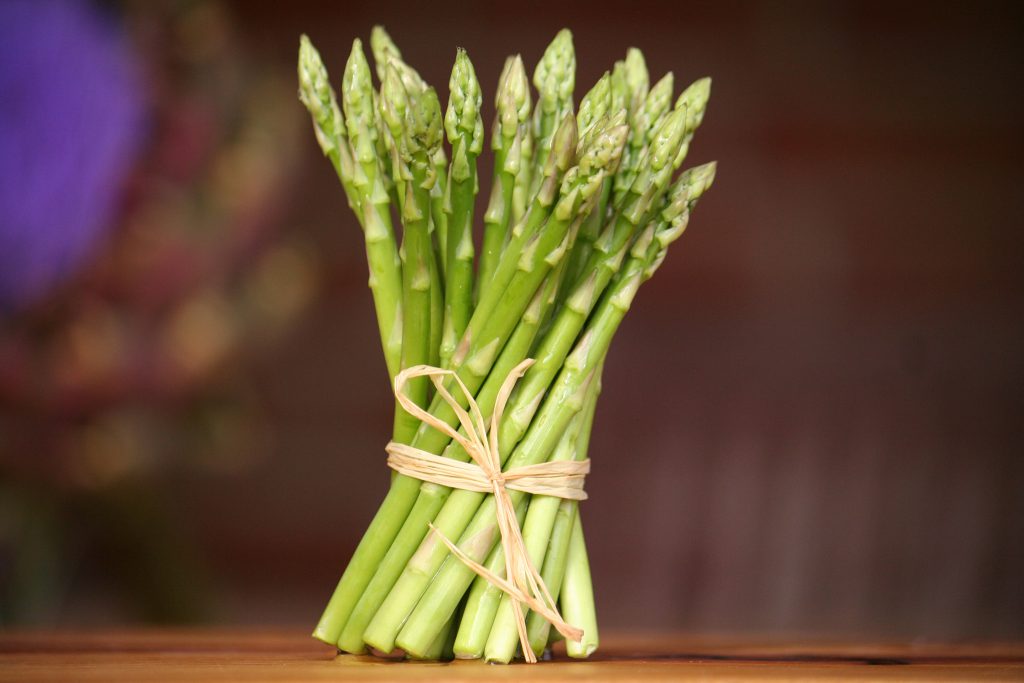
Asparagus
There are 3 different varieties of Asparagus that are named after their color. White, green and purple. The white variety is the most tender and mild and is peeled up to below the head in preparation. Green asparagus is more aromatic and stronger tasting. Only ⅓ of it is peeled before cooking. The purple asparagus is somewhere in between as far as taste is concerned but has to be peeled almost completely like the white variety.
Freshly harvested asparagus is juicy at the cut, firm and has a shiny skin. If you apply a little pressure a pleasantly fragrant juice should appear. Another trick is to rub two stalks together and they will squeak if they are fresh. Make sure the cut is not brown or gray. Fresh asparagus is very delicate so be careful that you don’t break the stalks getting them home!
Asparagus will keep for up to 4 days in the refrigerator unwashed and wrapped in a damp towel.
Washed and dried asparagus can be frozen in a sealed bag, but remove the cut ends first (not the tips). White asparagus needs to be peeled before freezing. At about 0°F it will keep for up to 8 months. When you are ready to use it, just put the frozen stems into boiling salt water. After about 5 minutes they will be firm and ready to eat.
TIP
An asparagus gazpacho is a great alternative to the classical warm soups. Peel the asparagus, break off the woody end and extract the juice from the stems. For 2 lbs of asparagus boil 4 eggs for 4 minutes. After 4 minutes douse the eggs with cold water and shell them. Put the asparagus juice, eggs and some mustard in a mixer and season it all with salt, pepper and sugar. Then add about ¾ cup of grape seed oil and mix it again.
Asparagus can of course also be served as a side dish. Peel the stems, break off the woody part and cut them into bite-sized pieces. Pan-fry the pieces in some oil, add butter and tarragon and season with salt before dousing it all with orange juice. Reduce the orange juice and the asparagus is ready to serve.

Schreibe einen Kommentar